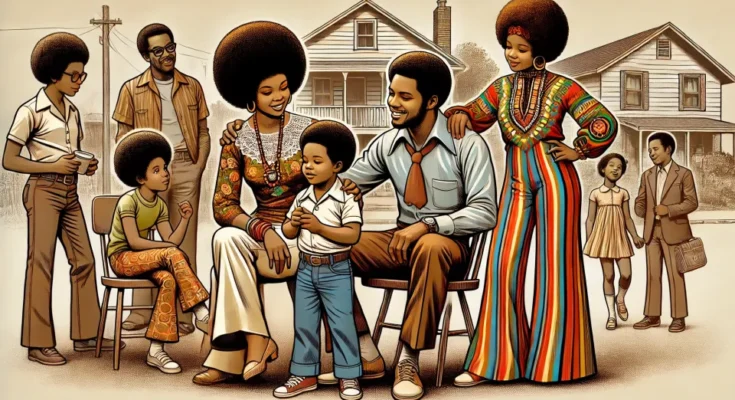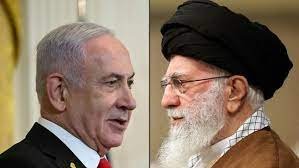Recently, an article titled “Wake Up Parents: Differences Between Our Parents of the 50s and 80s” has been making the rounds, sparking heated debates across social media and dinner tables alike. The piece argues that parents from the 1950s raised children who excelled in “enviable dimensions of life”—discipline, resilience, and societal contribution—while implying that parents from the 1980s and beyond have fallen short. This narrative, though compelling, is not new. It taps into a timeless tendency: the belief that one generation is superior to another. But is this really true? Or are we falling into the same old trap of romanticizing the past while scrutinizing the present? This article is a response to that piece, not to refute it outright, but to offer a more nuanced, empathetic, and human perspective. The focus here is to understand why generational comparisons are often illusions, and how each generation adapts to its unique challenges, and at best, how we can move beyond divisive debates to build a more inclusive understanding of generational evolution.
The Timeless Tug-of-War
In ancient Greece, Socrates lamented that the youth of his day were “disrespectful, impatient, and unruly.” Centuries later, the same sentiment echoes in modern complaints about Millennials and Gen Z. The recent article *”Wake Up Parents”* is just the latest iteration of this age-old pattern. It praises the parenting styles of the 1950s, suggesting they produced more disciplined, successful, and morally upright individuals compared to the children of the 1980s and beyond. But is this comparison fair? Or is it another example of nostalgia clouding our judgment?
The truth is, every generation tends to view itself as superior to the one before or after it. This isn’t just harmless opinion—it shapes how we interact with one another, from the dinner table to the boardroom. But what if, instead of debating who is better, we viewed generational differences as part of a natural, evolutionary process? What if we recognized that each generation is simply adapting to the unique challenges and opportunities of its time?
The Illusion of Generational Superiority
The belief that one generation is superior to another is deeply ingrained in our cultural narratives. The *”Wake Up Parents”* article is a perfect example. It paints a rosy picture of the 1950s, highlighting the discipline and resilience of that era’s children while critiquing the perceived laxity of modern parenting. But this narrative overlooks the complexities of both eras.
For instance, the 1950s were a time of post-war prosperity and rigid social norms. Parents of that era emphasized discipline and conformity because those were the values that ensured survival and success in their world. Fast forward to the 1980s and beyond, and the landscape had changed dramatically. Economic instability, the rise of dual-income households, and the advent of new technologies created a different set of challenges. Parents adapted by prioritizing flexibility, emotional intelligence, and creativity—values that are just as vital in today’s world.
The problem with articles like *”Wake Up Parents”* is that they cherry-pick examples to fit a narrative of decline. They ignore the fact that every generation has its strengths and weaknesses, its triumphs and failures. Instead of focusing on who is “better,” we should ask: What can each generation learn from the other? And how can we work together to address the challenges we all face?
The Evolutionary Lens: Adapting to Change
Generational differences are not arbitrary; they are shaped by the historical, economic, and technological contexts in which each generation comes of age. Consider the Silent Generation, who grew up during the Great Depression and World War II. Their values of frugality, resilience, and conformity were not just personal choices—they were survival strategies in a world marked by scarcity and uncertainty.
Fast forward to Gen Z, who are navigating a world of rapid technological change, climate anxiety, and social media. Their pragmatism, activism, and desire for authenticity are not signs of entitlement—they are adaptations to a world that feels increasingly unstable and interconnected.
This evolutionary perspective helps us see generational differences not as markers of superiority or inferiority but as responses to the unique challenges and opportunities of each era. It also highlights the interdependence of generations. The technological innovations pioneered by Gen X and Millennials, for example, have created new possibilities for Gen Z, just as the social movements led by Baby Boomers paved the way for greater equality and inclusion.
Bridging the Divide
I once facilitated a workshop that brought together employees from four different generations: Baby Boomers, Gen X, Millennials, and Gen Z. The goal was to address tensions in the workplace, which were often framed in generational terms. Baby Boomers complained that younger employees were “always on their phones,” while Millennials and Gen Z felt that older colleagues were “resistant to change.”
As the workshop progressed, something remarkable happened. A Baby Boomer shared how she had fought for gender equality in the workplace, often at great personal cost. A Millennial responded by describing how her generation was now pushing for greater work-life balance and mental health support. A Gen Z participant chimed in, explaining how social media had given her a platform to advocate for climate action. By the end of the session, the group had shifted from blaming each other to recognizing the unique contributions of each generation.
This experience illustrates the power of intergenerational dialogue. When we move beyond stereotypes and listen to each other’s stories, we can find common ground and build on each other’s strengths.
The Intangible Attributes We Hold Dear
Generational debates often revolve around intangible attributes that society holds dear: worthiness, productivity, refinement, and moral character. These attributes are subjective and deeply influenced by cultural norms and historical context.
– Worthiness: Older generations often measure worthiness in terms of sacrifice and resilience. They point to their struggles—whether it was fighting in a war, surviving an economic depression, or breaking down social barriers—as evidence of their moral fiber. Younger generations, on the other hand, often define worthiness in terms of authenticity, social impact, and self-expression. They value causes like climate action, mental health awareness, and social justice, which they see as the defining challenges of their time.
– Productivity: The definition of productivity has evolved over time. For older generations, productivity was often tied to physical labor and long hours in the office. For younger generations, productivity is more about efficiency, creativity, and work-life balance. The rise of remote work and digital tools has shifted the focus from “face time” to results, but this shift is often misinterpreted as a lack of commitment.
– Refinement: Older generations often associate refinement with formal education, etiquette, and cultural literacy. Younger generations, influenced by the democratizing power of the internet, value diverse forms of knowledge and self-expression. What one generation sees as a decline in standards, the other sees as a broadening of horizons.
– Achievements: Achievements are often measured differently across generations. Older generations may point to milestones like homeownership, stable careers, and raising a family as markers of success. Younger generations, facing economic uncertainty and shifting social norms, may prioritize experiences, personal growth, and social impact over traditional milestones.
The Divisive Mentality: Us vs. Them
The illusion of generational superiority is not just a harmless quirk—it has real-world consequences. It fosters a divisive mentality that pits generations against each other, creating tension and misunderstanding in homes, communities, and workplaces.
– In the Home: Generational tensions often play out in families, where differences in values and communication styles can lead to conflict. A parent who values hard work and discipline may struggle to understand a child who prioritizes mental health and work-life balance. These conflicts are often exacerbated by stereotypes and a lack of empathy.
– In the Workplace: Generational differences can create friction in the workplace, where older employees may feel undervalued or overlooked, while younger employees may feel micromanaged or dismissed. These tensions are often fueled by misconceptions—for example, the belief that younger workers are “entitled” or that older workers are “resistant to change.”
– In Communities: Generational divides can also affect communities, where different age groups may have competing priorities and perspectives. For example, older residents may prioritize infrastructure and public safety, while younger residents may focus on sustainability and social equity. These differences can lead to gridlock and a lack of progress.
– On the World Stage: At a global level, generational tensions are often reflected in debates about climate change, economic policy, and social justice. Older generations, who hold most of the political and economic power, are often criticized for failing to address the urgent challenges facing younger generations. At the same time, younger generations are sometimes dismissed as naive or idealistic.
The Roots of Distortion: Why We Fall into the Trap
The illusion of generational superiority is rooted in several psychological and social factors:
1. **Nostalgia**: Humans have a tendency to romanticize the past, remembering it as simpler, more virtuous, and more meaningful than the present. This nostalgia can lead to a distorted view of previous generations and an overly critical view of current ones.
2. **Identity Formation**: Each generation defines itself in opposition to the one before it, creating a sense of identity and purpose. This process often involves exaggerating differences and downplaying similarities.
3. **Confirmation Bias**: We tend to seek out information that confirms our existing beliefs and ignore information that challenges them. This bias reinforces stereotypes and prevents us from seeing the full picture.
4. **Fear of Change**: Generational shifts often bring about social, cultural, and technological changes that can be unsettling for those who are accustomed to the status quo. This fear of change can manifest as criticism or resistance.
Toward Harmony: Bridging the Generational Divide
To move beyond the divisive mentality of generational superiority, we need to foster empathy, understanding, and collaboration across age groups. Here are some steps we can take:
1. Challenge Stereotypes: Recognize that generational labels are oversimplified and often inaccurate. Instead of making assumptions, take the time to understand the unique experiences and perspectives of individuals.
2. Foster Intergenerational Dialogue: Create spaces where different generations can come together to share their stories, learn from each other, and find common ground. This could take the form of workshops, community projects, or even informal gatherings.
3. Focus on Shared Goals: Identify the challenges and opportunities that affect all generations, such as climate change, economic inequality, and social justice. By working together on these issues, we can build a sense of solidarity and purpose.
4. Celebrate Diversity: Recognize that each generation brings unique strengths and perspectives to the table. Instead of viewing differences as a source of conflict, see them as a source of richness and innovation.
A Call for Unity
The illusion of generational superiority is a barrier to understanding and collaboration. By recognizing the evolutionary nature of generational differences and fostering empathy across age groups, we can move beyond divisive debates and build a more inclusive and harmonious society. Let us celebrate the contributions of every generation and work together to create a future that honors the past, embraces the present, and prepares for the challenges ahead.
![]()






